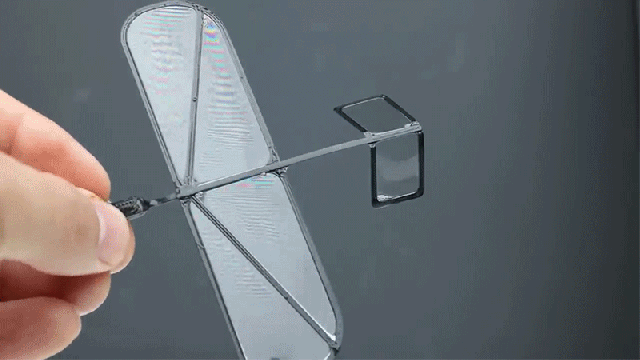As a general rule, if you want to make a vehicle more fuel-efficient, you do everything you can to make it lighter. For planes, that usually involves using space-age composites to build the fuselage and wings, but one YouTuber has found a very unorthodox material for a simple glider’s wings: soap and water.
We’ve all messed around with bubbles at one time or another, be it in a sink full of soapy dishes, or while running around a backyard with a bubble wand, but this is certainly an original application of a fascinating chemical phenomenon that few of us give much thought.
Bubbles can naturally form in plain old water, as is evident when filling a glass from a tap. But they appear and disappear quickly because the thin layer of water that forms the bubble evaporates almost immediately, leaving the structure unstable so it pops. When you mix soap with water, a thin film of the soap is formed on both the inside and outside of a bubble, trapping the water within and dramatically slowing down the evaporation so the bubble lasts much longer. You can even find bubble solutions that let you physically touch a bubble without it popping. Those often include additional ingredients like glycerin making the soap layer thicker which further slows the evaporation process so bubbles are more durable and longer-lasting.
For this aeronautics experiment, a basic lightweight structure for a glider was 3D printed from plastic, but with giant gaping holes on all the wings. This is not that different from how model planes are built, but instead of covering the wings in fabric or other lightweight flexible materials, the glider is simply dunked in a bowl of water mixed with dish detergent, and like a bubble wand, once it’s removed the holes in its wings are left covered with a thin layer of soap and water.
The glider’s structure was 3D-printed with ABS plastic just 0.2-millimetres thick (the nose was made slightly thicker at 8-millimetres) so it’s incredibly lightweight and frail, but with its wings covered in thin bubbles, it surprisingly manages to successfully glide for short distances.
Of course, it’s always a good idea to question what you’re seeing in any video shared on the internet, and the ViralVideoLab channel even admits that “the videos shown on the channel may contain CGI effects and it may therefore happen that the content of some videos does not correspond to reality.” But we’ve all seen bubbles float through the sky as the air pressure pushing on them helps keep them aloft without the bubble immediately popping from the forces, and the science here is essentially the same.
The channel has also shared another video of a larger but similarly lightweight 3D-printed glider flying on wings made of water that manages even more impressive flights, although every landing demonstrates the big drawback of using soap bubbles for wings: even the slightest collision or rough landing will cause them to pop and disintegrate. It’s safe to assume companies like Boeing and Airbus won’t be dumping too much R&D money into soap bubble wings, but on a smaller scale, it’s definitely a neat trick.
